Suggestive
Curriculum Framework for using computers in Teacher Training Programme:
“Computers in Education”
“Computers in Education”
Abstract: Computers have become the life line of young
generation. The present generation students like to embrace all the things in
the ambit of this modern technology. The educators are feeling shy and
reluctant to accept technology as their work partner. Will our present and the
immediate next generation educators like to view the gap widening between them
and further generation students in terms of usage of technology for teaching
learning purpose or they would like to modernize themselves in the struggle to
keep intact their responsible professional position intact? Are universities
and institutions in the field of teacher education focusing upon the courses
for using computers in education or they simply feel delighted to see the state
boards at school level and National/State councils for Educational Research and
Training are advancing at great speed to plan out integration of technology
with education with teachers struggling to complete even the prescribed
syllabus?
To ‘teach’is one of the simplest tasks! Just you know the content and “make available” a student willing to learn; start teaching. You may pursue a diploma/degree in education for teaching in more formalized structure. After completing a formal teacher training course, a teacher gets a tag of “A Qualified Teacher”. But does this really provide courage and confidence to face A MODERN TECHNOLOGICAL HIGH TECH CLASS OF YOUNG GENERATION? Today students of this modern generation are much advanced and smarter than their teachers in terms of usage of modern technical gadgets. It looks as if technology had been with the children since birth, especially computers been an integral part of child’s life and personality. He/she would once forget what his/her parents had instructed, but would never forget to be “Online” at a specified time to join his/her friends at chat room.
But they even want that computers should be
there for their routine ‘boring education’, although not at the cost of their
dearly loved teachers. Students are ready to accept the changes in their
learning styles, but their teachers are feeling feared that computers are
complicated to handle, if they are used in education for teaching learning
purpose and computers might substitute the traditional teachers. Neither the
pre-service teacher training courses are focusing to include computers in
integration with education, nor are the in-service trainings focusing upon
using computers in education. Schools all over the country are demanding
teachers who are ready to initiate the process of Computer Assisted
Instructions and initialize integration of technology with education, but the
teachers we are producing are just like the conventional and that too
overlapped with traditional methods of teaching. When the time will come, that
universities and institutions in the field of teacher education, feel an urge
to revise their curriculum keeping in view the modern technological changed society?
In order to meet the challenges provided by
present society, many universities in the field of Teacher Education had
introduced an optional course in computers. This only brought awareness about
computers in the field of Teacher Education. The student-teachers were made to
know about basic computer hardware and some software application packages. But
keeping in mind the interest and psychology of modern learner, many
universities tried to ‘Integrate Technology with Education’. They
primarily focused upon use of computers in education hence; they initiated to
teach a core paper “Computers in Education” with other foundation papers
in education, so as to initiate a process of making a relation between teacher-computer-student.
Although National Curriculum Framework (NCF
2005) and Curriculum Framework for Teacher Education (2006) prepared by
National Council For Teacher Education in collaboration with National Council
of Educational Research and Training, had urged to focus upon integration of
technology with education, yet many universities not bothered to reframe their
traditional curriculum for Teacher Education. And those universities who tried
to initiate the process were faced by different challenges including lack of
specialists and professionals to frame proper curriculum, curriculum as per
needs of modern developing India with global economy, teacher educators and
study material for such curriculum etc. There are indeed many specialized
teachers and a plethora of study material for technical knowledge in computers,
but we lack teacher educators and resources for teaching computers in relation
to education. We indeed lack Teacher Educators who are willing to
integrate technology with education.
A suggestive curriculum framework needs to be framed by National Council for Teacher Education and hence appropriate syllabus should be developed by different universities and authoritative institutions in the field of Teacher Education, so as to cover the prescribed framework.
But before that, let we see some of the
Encourage cooperation amoung students
Real
life uses of Computers in Education
Teaching
Learning process
·
Instructions:
·
Instructing the students using PowerPoint slides, Word documents
or Web pages and using hyperlinks for better concept clarity.
·
Helps in improving pronunciation of students by using
microphones, headphones, speakers, specially prepared software and special
dedicated websites.
·
Video conferencing, chat and email helps in better
communication, hence better concept clarity. Also concept of E-tutor has given
access to teachers instantly and given teachers a better chance to earn.
·
Current syllabus can be viewed through website of the concerned
school board; made available to students if teacher has made a website and
uploaded using Internet; and updating- using web could be done easily.
·
Inspiring students to express their imagination using Paint
Brush
·
Encouraging the students to surf web pages and gather relevant
detailed information through web pages.
·
Readymade software could give practice material to students
·
Learning:
·
Collecting notes /pictures/videos from web pages for detailed
information and projects/assignments.
·
Saving the documents as soft copy for future use
·
Learning through animations, as they are much near to the
students
·
E-books/online libraries/online encyclopedias help to guide in
minutes and save precious time and resources.
·
Creating videos using images, albums for better power point
slides.
·
Simulated Learning gives them an idea of the real situation.
·
Publication of pamphlet/brochures for awareness with institution
and among community members.
Testing
and Evaluation process
·
·
Keeping records of students for their academic scores
·
Keeping records in relation to personal history
·
Creating question bank for students
·
Using computers for testing by asking questions from question
bank
·
Online Testing and Evaluation
·
Analysis and interpretation of the data
·
Previous year Question papers and sample papers using web sites.
Guidance
purposes
·
·
With reference to collective records of the students maintained
year wise, stored in computers
·
Testing for aptitude, interest, psychology using computer data
bases and internet.
Library
·
·
Documents stored as soft copy for students/faculty members use
·
Online magazines , journals, brochures , research articles
·
Records of the books/record of the books maintained using
special library software.
·
Records of the issues and returns of the books.
School
Administration
·
·
Records of students(personal, academic, financial)
·
Records of employees of school
·
Accounts of the institution
·
Decision making process
·
Aid to memory with minimum paper work
·
Eye on current regulations of government and affiliating school
boards and related authorities
·
School canteen for billing
·
Fees collection and maintenance of fees record.
·
Circulation of instruction/notices and getting it in printed
form
·
Preparation of school magazine.
On the basis of above uses,let we list out
Framework
for using Computers in Education
v Computers in the modern society
v Basic computer hardware
v Software application packages (like word processors, spread
sheets, multimedia etc.) and their utility in education
v Development of Question Bank and interactive quizzes for
evaluation
v Using Internet as communicative and research tool
v E-learning
v Copyright issues and the relative issues
v Computer Assisted Instructions
v Computers Enhancing Teaching Learning Process
v Integration of Technology with Education
v Lesson plans demonstrating use of computers in teaching
Apart from theoretical paper, there must be a practical compulsory examination based on the framework which should be of more weightage. Focus should be made on demonstrating use of computers in Teaching-Learning process. Practical must include demonstration of e-learning process; especially web conference, preparation of slides, and creation of result with analysis of same and so on.
A suggestive syllabus based on the above framework is given so as to at-least, view a directive sample.
COMPUTERS
IN EDUCATION (CORE PAPER):(A Model Syllabus)
Objectives:
After completing the prescribed syllabus, the
students will be able to:
ü Appreciate the use of computers in enhancing Teaching-Learning
Process
ü Identify the main components of the hardware in use (i.e.
Central Processing Unit (CPU), input devices, output devices and storage
devices)
ü Use software application packages skillfully and intelligently
for producing structured educational material for use in several subjects which
are their core and methodology papers.
ü Demonstrate an understanding of how one can communicate with a
computer online for sources of information, as well as with other people using
a network.
ü Browse the internet and conduct research for their lessons
ü Evaluate digital lessons plans, project, presentations and
research
ü Appreciate the concept of integration of technology with
education
Contents
Unit I (Introduction to Computers)
• Place of computers in our society
• Computers – Meaning and characteristics
• Classification of computers (based on size and purpose)
• Hardware Components
• Computers – Meaning and characteristics
• Classification of computers (based on size and purpose)
• Hardware Components
·
Input Devices (Keyboard, Mouse, Scanner, Microphone, Joystick,
Web Camera, Digital Camera)
·
Processing Devices (CPU and its components)
·
Memory Devices (Primary-RAM, ROM; Secondary-Hard Disk, Floppy
Disk, CD-ROM, Pen Drive)
·
Output Devices (Monitor, Printer, Speakers, LCD Projectors)
• Software Components (System software,
Application software)
• Computer Networks (LAN, MAN, WAN)
• Introduction to Basic Computer Screen [Operating System, start/shutting of the computer, Exploring Desktop Icons, Managing folders, Basic Commands
(cut, copy, paste, saving/accessing a file].
• Using ‘Paint’ as a drawing tool
• Scan and Print document/picture
• Computer care and computer lab maintenance.
• Computers Enhancing Teaching Learning Process.
• Computer Networks (LAN, MAN, WAN)
• Introduction to Basic Computer Screen [Operating System, start/shutting of the computer, Exploring Desktop Icons, Managing folders, Basic Commands
(cut, copy, paste, saving/accessing a file].
• Using ‘Paint’ as a drawing tool
• Scan and Print document/picture
• Computer care and computer lab maintenance.
• Computers Enhancing Teaching Learning Process.
Unit II (Software Application Packages and
Question Bank Development)
• Word Processors
Ø Apart from basic options of a Word processor; focus on: Creating and saving a new document, drawing tables, hyperlinks, mail merge and macro.
Ø Word Processors enhancing Teaching Learning Process
Ø Apart from basic options of a Word processor; focus on: Creating and saving a new document, drawing tables, hyperlinks, mail merge and macro.
Ø Word Processors enhancing Teaching Learning Process
• Spread sheets
Ø Apart from basic options of a spreadsheet; focus on: Data inserting, sorting and analyzing, using formulae, presenting data on charts.
Ø Spreadsheets enhancing Teaching Learning Process
Ø Apart from basic options of a spreadsheet; focus on: Data inserting, sorting and analyzing, using formulae, presenting data on charts.
Ø Spreadsheets enhancing Teaching Learning Process
• Multi media presentations
Ø Apart from basic options of Power Point; focus on: Storyboarding of presentations (emphasis on content), adding images, videos, animations, transitions and hyperlinks to the slides.
Ø Multimedia enhancing Teaching Learning Process
Ø Apart from basic options of Power Point; focus on: Storyboarding of presentations (emphasis on content), adding images, videos, animations, transitions and hyperlinks to the slides.
Ø Multimedia enhancing Teaching Learning Process
• Question Bank Development
Ø Developing Question Bank using Hot Potatoes with different types of questions such as multiple choice, short answers, jumbled sentences, crossword, match, order, gap-fill exercises.
Ø Hot Potatoes enhancing Teaching Learning Process
Ø Developing Question Bank using Hot Potatoes with different types of questions such as multiple choice, short answers, jumbled sentences, crossword, match, order, gap-fill exercises.
Ø Hot Potatoes enhancing Teaching Learning Process
Unit III (Internet)
• Basics of Internet
Ø Define terms related to the Internet
Ø Enter an address to locate a specific Web site
Ø Explore various sites on the World Wide Web
Ø Use hyperlinks in Web pages
Ø View educational resources on the World Wide Web
Ø Define terms related to the Internet
Ø Enter an address to locate a specific Web site
Ø Explore various sites on the World Wide Web
Ø Use hyperlinks in Web pages
Ø View educational resources on the World Wide Web
• Search engines as research tool
Ø Use a search engine to locate information on the World Wide Web
Ø Describe good search techniques
Ø Use a search engine to locate information on the World Wide Web
Ø Describe good search techniques
• Internet as communication tool for peer
interaction/expert consultation
Ø Create and send electronic mail
Ø Read messages posted on an Internet discussion group/board
Ø Use an education-related chat room on the Internet
Ø Conduct videoconferencing
Ø Blogs to encourage interaction
Ø Role of internet in collaborative projects
Ø Create and send electronic mail
Ø Read messages posted on an Internet discussion group/board
Ø Use an education-related chat room on the Internet
Ø Conduct videoconferencing
Ø Blogs to encourage interaction
Ø Role of internet in collaborative projects
• Examine and critically evaluate a Website
• Computer virus
• Ensuring students safety on the internet
• International copyright issues regarding computer technology and internet
• Computer virus
• Ensuring students safety on the internet
• International copyright issues regarding computer technology and internet
Unit IV (Integrating technology with
education)
• Computer Assisted Instructions (Meaning),
Difference between Computer Assisted Instructions and Conventional Teaching.
• Using technology to promote higher order thinking skills and develop curriculum framing questions.
• Technology supported project based learning
• Development of projects depicting integration of technology with education
rojects.
• Using technology to promote higher order thinking skills and develop curriculum framing questions.
• Technology supported project based learning
• Development of projects depicting integration of technology with education
rojects.
Hope this suggestive framework would
en-lighten a spirit among ‘Teacher Education curriculum framers’ to develop a
more innovative curriculum for Computers in Education.
Link to:

















Social Plugin